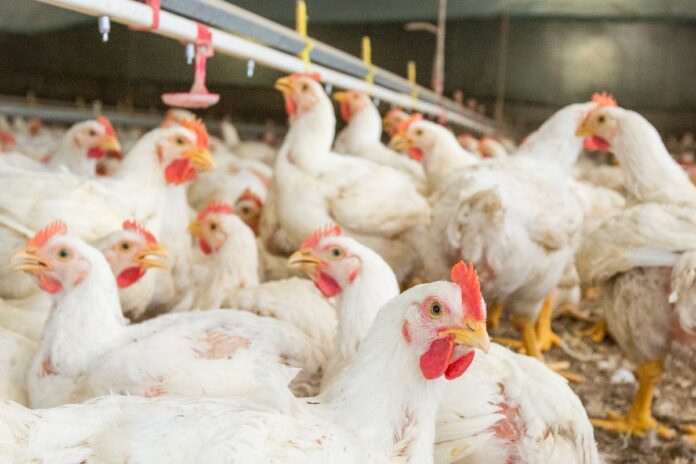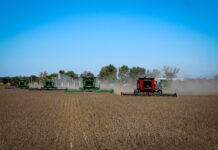
New research has identified two mutations in the highly pathogenic avian influenza (HPAI) H5N1 virus that help explain why the North American lineage behaves differently from its Eurasian counterpart — with an unprecedented ability to infect mammals such as dairy cattle.
The findings, published in Science Advances, provide some of the clearest evidence to date of the molecular mechanisms driving the increased virulence of the North American strain, which belongs to clade 2.3.4.4b.
From birds to cattle
The outbreak of HPAI in U.S. dairy herds in March 2024 marked the first time anywhere in the world that the virus had been detected in cattle. Since then, more than 1,000 cases across 18 states have been confirmed by the USDA, alongside at least 70 human infections — mostly in farm workers — including one fatal case.
While Europe and Asia continue to battle avian influenza in poultry and wild birds, the U.S. situation has been unique in its crossover to cattle. This divergence prompted researchers, led by Young-Il Kim of the Center for Emerging Virus Studies in South Korea, to investigate what makes the American strain different.
Two mutations make the difference
The team identified two genetic changes — PB2-478I and NP-450N — that enhance the virus’s ability to replicate and spread within the body. In ferret models, viruses carrying these mutations caused systemic infections and invaded immune system cells. When the mutations were removed, infections were far more limited.
Further experiments demonstrated that viruses with the two mutations could replicate not only in human respiratory cells but also in bovine mammary tissue, providing a likely explanation for their spread among U.S. dairy herds.
Expert views
Independent experts have described the study as a major step forward. “This carefully designed research provides crucial evidence on the genetic determinants of H5N1 virulence and adaptation to mammals,” said Aitor Nogales González, virologist at the Animal Health Research Center (CISA, INIA-CSIC) in Spain.
Ursula Höfle of the SaBio Group (IREC, CSIC-UCLM-JCCM) noted that the study’s design — combining genome sequencing, ferret trials, and cell culture models — adds credibility to the results, though she also pointed out limitations. For example, bovine breast organoid models confirm replication potential in mammary tissue but do not yet explain the precise transmission route between cows, or from cows to humans.
Implications for surveillance
The study underscores the urgent need for reinforced surveillance and targeted interventions. While the risk of human-to-human transmission remains low — experts stress that the virus would need to mutate significantly to achieve that — the ability of H5N1 to cross species barriers is deeply concerning for both animal and public health.
In Spain, outbreaks have been detected since July 2025 in poultry farms across Extremadura, Castilla-La Mancha, Andalucía, and Castilla y León, as well as in wild birds, including in the Doñana National Park, a site of special ecological importance for biodiversity. As a result, Spain officially lost its status as an “avian flu-free country” with the World Organisation for Animal Health (WOAH) in mid-July 2025.
“We should not only think about what might happen, but also about what is already happening: millions of birds culled, biodiversity affected, and livelihoods at risk,” said Elisa Pérez Ramírez of CISA-INIA.
A global challenge
The identification of the PB2-478I and NP-450N mutations sheds light on why the North American strain is more dangerous than those currently circulating in Europe. But it also highlights a broader lesson: avian influenza is evolving rapidly, and the window for proactive, science-based action is narrowing.
















